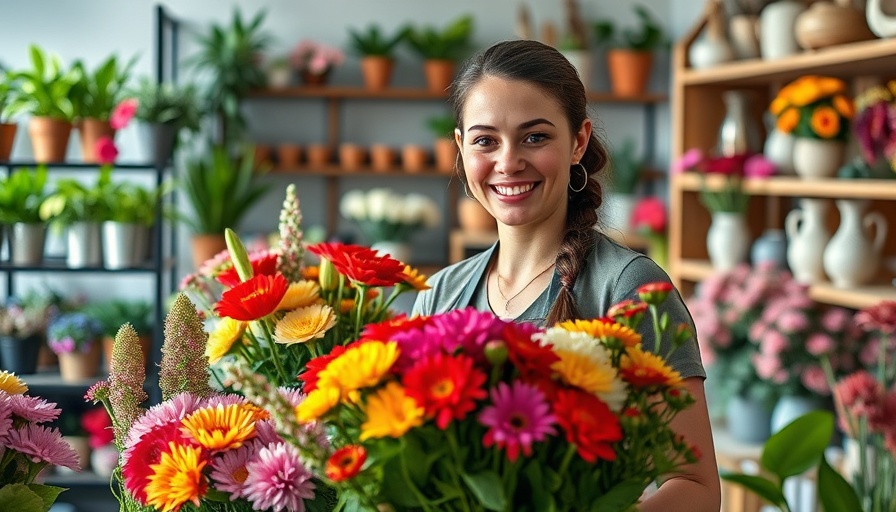
A Timeless Floral Legacy: The Heart of Butz Flowers
Butz Flowers in New Castle, Pennsylvania, is not just any florist; it's the oldest florist in America, steeped in rich history and community ties. Established in 1850 by Paul Butz, a Swiss immigrant, it started as a wholesale orchid business and quickly blossomed into a beloved retail establishment by 1895. With over 170 years of serving its community, Butz Flowers has woven itself into the very fabric of local life, marking celebrations, memorials, and everyday moments with care and expertise.
Connecting Communities Through Floristry
Florists like Butz Flowers are instrumental in building community connections, and the impact of their service often goes beyond mere transactions. Each bouquet exchanged through their doors carries stories of local families—weddings, anniversaries, and even farewells. In an era where convenience often trumps sentiment, these storied establishments remind us of the beauty and significance of personal touch. They curate memories through their flowers, remembering the preferences of long-time customers and ensuring their service reflects the community's heart.
The Historical Significance of Butz Flowers
Located at 120 E Washington Street, Butz Flowers has maintained its charm amidst the bustling downtown of New Castle. The store's longevity speaks volumes about its commitment to quality and customer relations. Not just a florist, it has become a repository of local history—its walls echo stories from the past, each floral arrangement a reminder of life’s moments.
A Comparison of Historic Florists Across America
While Butz Flowers stands as the oldest, several other florists also boast noteworthy histories. For instance:
- Whiting Flower Shop, Whiting, IN - Established in 1900, it transitioned from a small shop to a full-service florist.
- Neubauer's Flowers, Uniontown, PA - Founded in 1921, this florist operates from a converted home and is renowned for its seasonal displays and community outreach.
These shops, alongside Butz Flowers, show that floristry is not just about selling products but safeguarding traditions and local stories that enrich communities.
Visiting Butz Flowers: A Piece of Living History
For those interested in experiencing this charming establishment firsthand, a trip to Butz Flowers is worthwhile. The shop is open Monday to Friday from 9 a.m. to 4:30 p.m. and on Saturdays from 9 a.m. to 1 p.m., perfect for those looking to stop by after celebrating their weekend?
Each visit offers an opportunity to participate in a tradition that transcends time—picking up flowers from a shop that has seen generations pass through its doors. With the likes of Butz Flowers continuing to thrive, the essence of local culture persists, just like the vibrant petals of their freshest blooms.
Why Supporting Historic Florists Matters
In a world increasingly dominated by large chains and fleeting trends, supporting shops like Butz Flowers ensures that local narratives endure. Each stop at this establishment is an investment in a piece of history and community fabric, ensuring these traditions are passed down to future generations. Every bouquet stands as a token of love, remembrance, and celebration that can’t be matched by the impersonal nature of big retailers.
Join the Legacy: Visit Butz Flowers
Embrace the rich history of Butz Flowers by making a visit. Whether you need flowers for a special occasion or want to bring home a piece of local culture, this historic florist offers both beauty and legacy. As you engage with Butz Flowers, you support a tradition that fuels community connection and honors the artistry of floristry. Don’t miss out on the chance to be part of this ongoing story.
 Add Row
Add Row  Add
Add 




Write A Comment